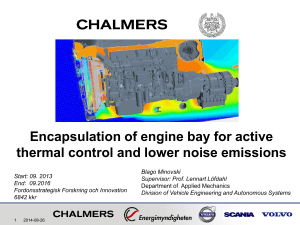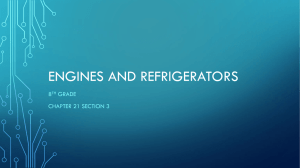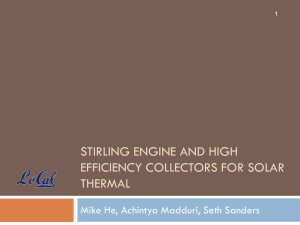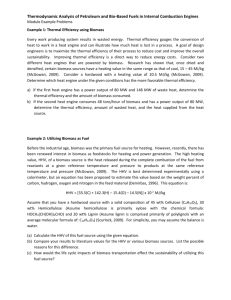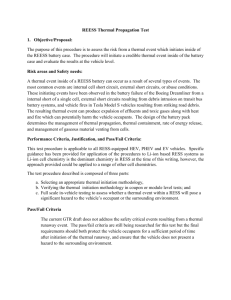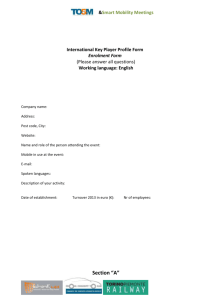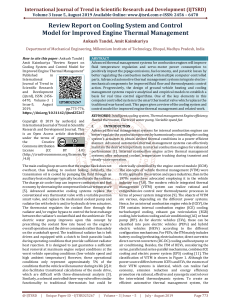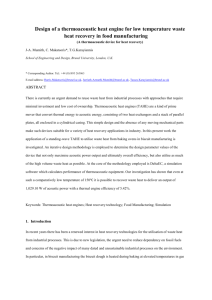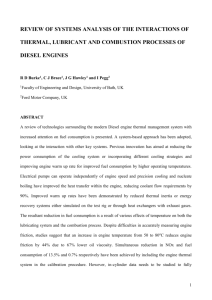Unsteady thermal management simulations for a passenger vehicle
advertisement
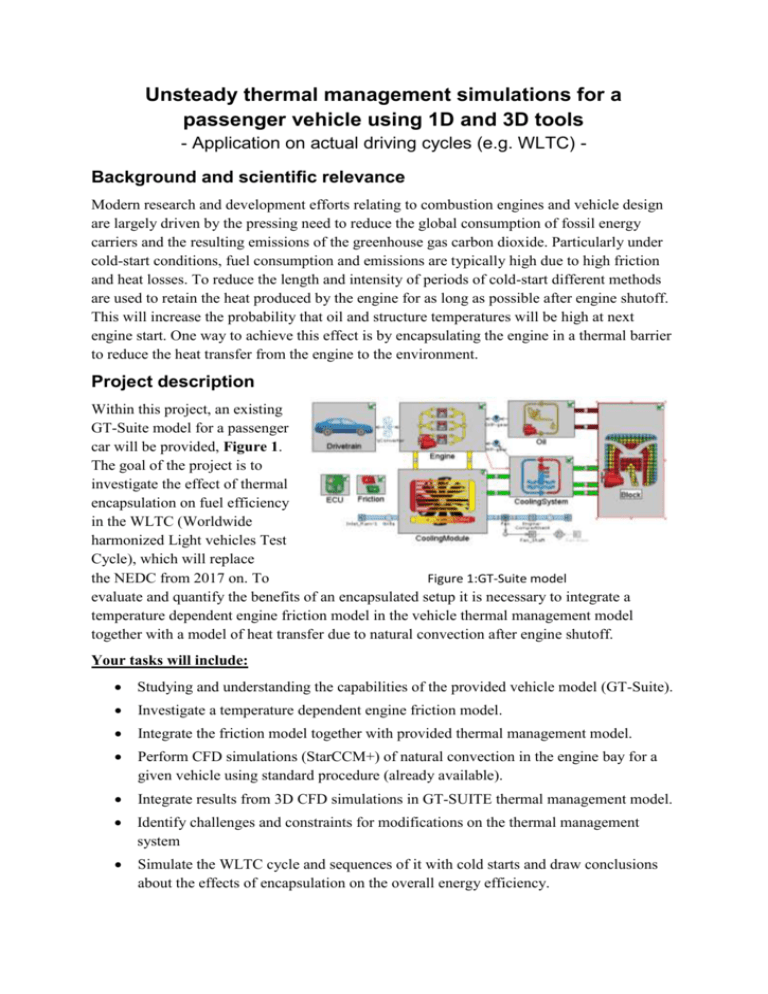
Unsteady thermal management simulations for a passenger vehicle using 1D and 3D tools - Application on actual driving cycles (e.g. WLTC) Background and scientific relevance Modern research and development efforts relating to combustion engines and vehicle design are largely driven by the pressing need to reduce the global consumption of fossil energy carriers and the resulting emissions of the greenhouse gas carbon dioxide. Particularly under cold-start conditions, fuel consumption and emissions are typically high due to high friction and heat losses. To reduce the length and intensity of periods of cold-start different methods are used to retain the heat produced by the engine for as long as possible after engine shutoff. This will increase the probability that oil and structure temperatures will be high at next engine start. One way to achieve this effect is by encapsulating the engine in a thermal barrier to reduce the heat transfer from the engine to the environment. Project description Within this project, an existing GT-Suite model for a passenger car will be provided, Figure 1. The goal of the project is to investigate the effect of thermal encapsulation on fuel efficiency in the WLTC (Worldwide harmonized Light vehicles Test Cycle), which will replace the NEDC from 2017 on. To Figure 1:GT-Suite model evaluate and quantify the benefits of an encapsulated setup it is necessary to integrate a temperature dependent engine friction model in the vehicle thermal management model together with a model of heat transfer due to natural convection after engine shutoff. Your tasks will include: Studying and understanding the capabilities of the provided vehicle model (GT-Suite). Investigate a temperature dependent engine friction model. Integrate the friction model together with provided thermal management model. Perform CFD simulations (StarCCM+) of natural convection in the engine bay for a given vehicle using standard procedure (already available). Integrate results from 3D CFD simulations in GT-SUITE thermal management model. Identify challenges and constraints for modifications on the thermal management system Simulate the WLTC cycle and sequences of it with cold starts and draw conclusions about the effects of encapsulation on the overall energy efficiency. Relevance for the department At the department the two groups dealing with the powertrain are Vehicle Aerodynamics and Thermal Management/VATM (cooling) and Combustion (heat production). This project gives the groups the opportunity to work together in this topic which is crucial for the function of a vehicle. A continuation of this project could be how to reduce the aerodynamic drag while maintaining a proper cooling (reduce the so-called cooling drag), or how the cooling of a hybrid powertrain should be designed (where components with different cooling requirements are mixed). Both areas are important for the future work at our department, and this project can be seen as a first step towards a collaboration between the two groups (VATM and Combustion). Besides, the student will learn a number of commercial softwares which will be useful later on his/her career. Organisation The project will be supervised by: Blago Minovski, VEAS, PhD student in Vehicle Aerodynamics and Thermal Management Jelena Andric, Combustion, post doc working with design and modelling of future vehicles Examiners are: Lennart Löfdahl, professor, Vehicle Aerodynamics and Thermal Management Sven B. Andersson, biträdande professor, Internal Combustion Engines There will be weekly meetings where all of the project participants will be invited. And since the students will be sitting at our department there will be (the possibility of) a daily contact with the supervisors. Expected outcome The expected outcome is to get information/answers regarding the tasks mentioned above. This will be indications of how to proceed in the area of thermal management which will be helpful since there is a strong connection between the formulated proposal and currently running research projects. The knowledge that will acquired within this project will also be valuable input for a comprehensive thermal management model for hybrid vehicles. The students will be encouraged to author/coauthor a conference / journal paper together with the supervisors and to participate and present the work at an international conference.

